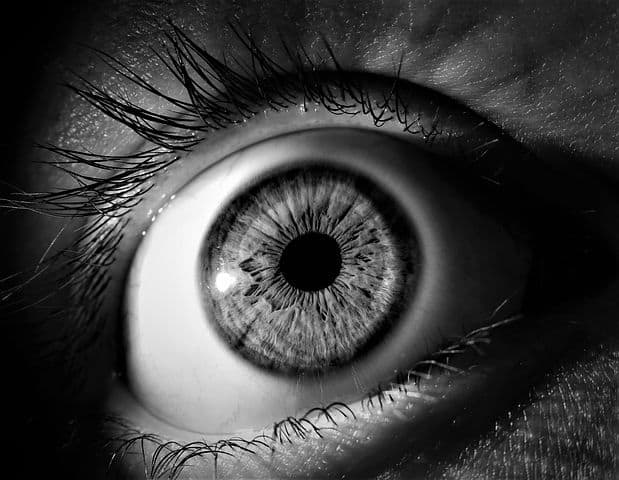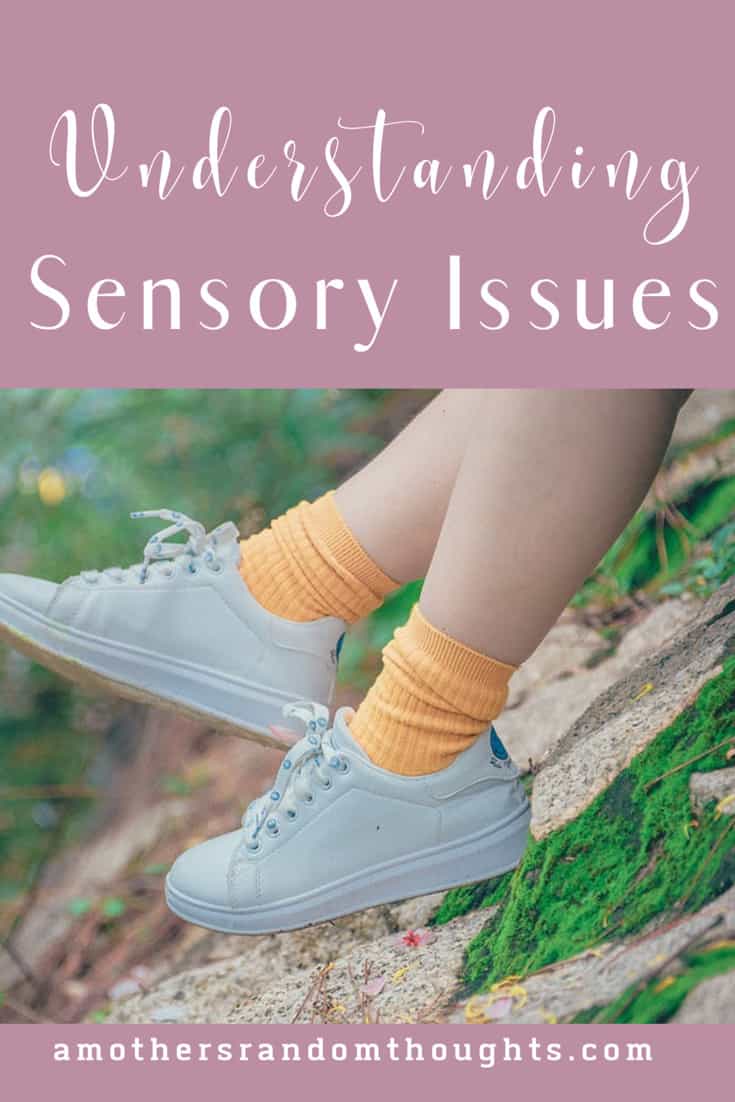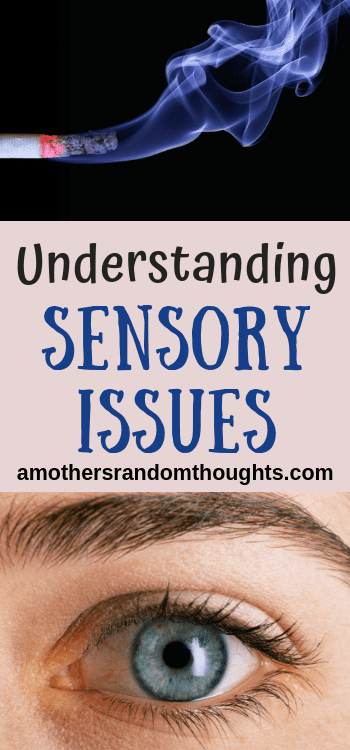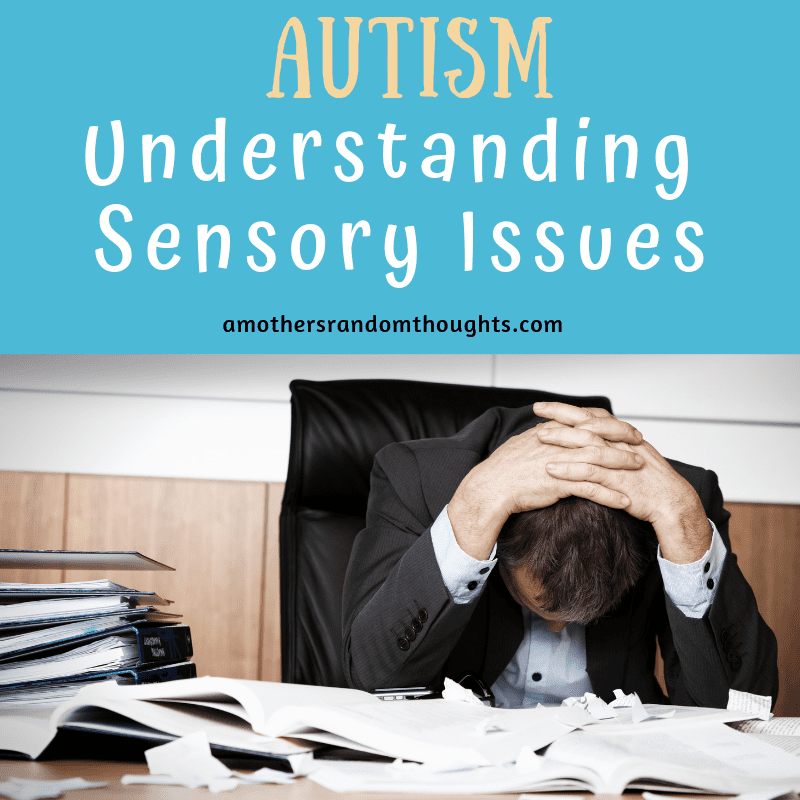Understanding Sensory Processing Disorder
Most people don’t say, “there’s something wrong with me.” In fact, I didn’t begin to understand my own sensory processing issues until I was well into my 40’s. I attended a blogging conference a few years back and came to a place where I started to really grasp my own sensory issues. You see, no one else seemed bothered by the nametag lanyards, however, they not only bothered me, but I was sure I was being slowly strangled by it. This was not the first conference I attended, but it was the first one with a lanyard only option. And it was the first time I had a true picture of how I process things. This post is from an adult who has lived with these issues. And the purpose of this post is to give you an understanding of sensory processing disorder.

Realizing My Own Sensory Issues
Now at the above-mentioned conference, I realized I had a problem because people kept telling me to put my name tag on. Every session that I sat in, I could only feel the name tag around my neck and could focus on little else. Day 2, I found a safety pin and pinned the name tag on my shirt. The problem was that I was a rebel, and I know this doesn’t seem like a horrendous thing to be doing, but a sponsor had paid for that lanyard, and nobody looked at me and thought, “she has sensory issues.” They just looked and said, “We really want you to wear the lanyard while you are at the conference.”
I never thought to say that I was having severe anxiety over the lanyard because I had never thought about it before that day. Now I had known that I didn’t particularly like to wear necklaces and I rarely wear any jewelry beyond my wedding ring. When I do wear earrings and a necklace, they usually find themselves in my purse on the drive home from the event. So while I understood that I had sensory issues, I didn’t realize the extent of them.
What is Sensory Processing Disorder?
Sensory Processing Disorder involves the brain and the five senses – touch, taste, hearing, seeing, and smelling the world around you. According to WebMD, it is defined as:
Sensory processing disorder is a condition in which the brain has trouble receiving and responding to information that comes in through the senses.
Additionally, Sensory Processing Disorder or SPD may be associated with Autism, but you can have one without the other.
Coming to Terms with Sensory Processing Disorder
As we were driving home from the conference, I had plenty of time to think over the events I had encountered. However, I also reflected on things that occurred throughout my life. You see, I didn’t know I had a sensory processing disorder. Years ago, the understanding of sensory issues was that you were immature and needed to get over yourself. I was just a difficult child. I didn’t put any thought into why I selected certain clothes, slept a particular way, hated certain locations, etc. Additionally, I am sure that as a child I had even more sensory issues than I realize today. As a child, I think I was so overwhelmed that I couldn’t even verbalize how I felt.
One of the things that I was always painfully aware of was that I hated sweaters and similar textures, and it seemed like I wore a lot of sweaters as a child. I wore a uniform to school and we had to wear uniform sweaters. Can I just say YUCK!
Also, I realize I have an intense dislike of coats. This is not just “I don’t like to wear coats.” It is more of a feeling of being in a straight jacket. TOTAL CONFINEMENT AND RESTRICTION. As a child, you are not given an option to wear a coat. You just have to follow the rules. This led to a system overload, and I couldn’t detect individual things I hated because there was so much on every part of my body that I couldn’t process anything.
Making A List of My Sensory Issues
On that drive home I started a list of what I remembered throughout my lifetime. The moments that I had the most difficulty. The times that people that I was a brat. And things started to make sense to me. I not only started that list. I typed up most of this post. But I let it sit for years because I have hidden who I am especially after having Jack-Jack (my son with autism).
Here is a list of what I remember from my childhood (and even now) and how I dealt with many of my sensory issues throughout my life.
Neck Issues:
I HATE things around my neck: necklaces, lanyards, t-shirts, turtlenecks, and hands. When stylists wash my hair and cut too close to my neck I am extremely uncomfortable. As a child, I never verbalized this. I don’t even know that I understood that it was because of things irritating my neck. I did believe tags bothered me, but I just thought it was the itchiness of the tag or clothing.
As an adult I have dealt with this by buying clothing without tags – this has become even easier since many clothes are now being produced without the annoying neck tag. Having the freedom to say, “I don’t like this item,” and getting rid of it has helped tremendously.
My children joke around that all of my shirts have are a similar material. I have found that certain materials feel better against my skin. Additionally, I purchase nothing with a high neckline.
Feet:
I HATE SHOES: I prefer to be barefoot, but I know that I cannot walk around that way all the time. Flip-flops are my second choice, but they cannot be flats. When I wear shoes I select something with some heel. I have a deep hatred for tennis shoes, and socks must be thin. The thicker the sock, the greater the hatred. I wear flip-flops almost all the time, but I also have the ability to buy my own shoes.
Eyes:
I am extremely nearsighted and have to wear either glasses or contacts. Most days I can feel the contacts in my eyes the entire time. On rare days they don’t bother me, but having something in my eyes is worse than wearing glasses. Daily my glasses bother me.
Teeth:
I am always aware of my teeth – 24 hrs a day/7 days a week. Every nook, cranny and filling in my teeth irritate my gums, tongue, and the insides of my cheeks. I constantly have the feeling like my tongue is too big. It touches my teeth and is annoying. So the extensive, expensive dental work is absolutely annoying to me. I have been told that I am not a great candidate for implants and dentures will probably be in my future, but I do expect those to be a source of irritation.
Head:
Wearing my hair up – headbands, rubber bands, and bobby pins all give me headaches. Sometimes my scalp just feels like something is crawling through my scalp. Obviously, the feeling of crawling or itchiness on your skin is WAY TOO ANNOYING. Furthermore, I hate hats. It doesn’t matter how cold it is outside, I refuse to wear a hat.
Other Issues:
Sometimes I can wear make-up, but other days I can hardly wait to get home to take it off. It feels like wearing a mask on my face. Surprisingly, nail polish and nail wraps do not bother me at all.
Bras only bother me when I am wearing them! AND I take my bra off the moment I get in the house.
Watches not only bother my wrist, but my body messes with the mechanism and they stop working. When my husband and I were first married, I would wear his watch and it would stop working on my wrist. I would put it on the dresser in our room and it would begin working again.
Other Sensory Processing Disorder Issues:
As an adult, I have choices: Make-up versus no make-up; hair up or down; types of clothing and shoes I wear. But too often we don’t give children these choices. Shoes, socks, coats, high necklines, underwear rubbing, glasses, hats, teeth in their mouth all assaulting you at the same time – Children can’t even begin to pinpoint the extent of what is bothering them. And this is only the things touching their bodies. Add in the external stimuli and life becomes a little more unbearable.
COLORS:
You know those tests that check hues and you line up the colors in order. I score really high on those tests. In fact, if I walk into a restaurant and the decor has too many colors, I can’t eat there. One of the reasons I love visiting Walt Disney World is its excellent decor in all the resorts and restaurants. Their color choices and decor is excellent across the board. There is a sense of peace in my world when we are there.
However, I have been known to tell my family that a restaurant is completely irritating to me because of the color choices or scattered decor. There are restaurants that I just avoid because my brain is bothered by someone’s bad taste in colors. Honestly, I think this affects how I feel about the food more than the taste of the food.
SMELLS:
Perfumes and cigarette smoke bother me. I grew up in a household where there was a smoker. I never realized how much I hated smoke until I was away from it on a regular basis for a couple of years.
TASTES:
Ironically, the only taste that truly bothers me is raspberry. But I think like everything else in my life, I am a late bloomer and have not actually explored things I like versus things I don’t like as far as food goes. This is probably an area that I will begin to delve into in the coming years. Having children that have diverse sensory issues presents challenges, and your child cannot even begin to verbalize all the sights, sounds, smells, and tastes that are overloading their systems.
LACK OF FOCUS IN SENSORY PROCESSING DISORDER:
During the conference, I also realized that I have to sit up close to concentrate. If I sit 3-4 rows or further from the front, I cannot even pay attention. There are too many people and distractions. I am short and because of that, I was assigned a seat near the front of the classroom all through elementary school. This was ideal for me, but high school was different. When I reflect on the high school classes that were a struggle for me, I realized that I was always sitting in the back of the class. In college, I could select my own seat and naturally gravitated toward the front of the classroom.
GAINING AN UNDERSTANDING OF SENSORY PROCESSING DISORDER?
While I have developed my own coping mechanisms throughout my life and most people do not even realize I have some issues, you do not want to let your child deal with this on their own.
How can you help your child deal with sensory issues? Are you understanding when it comes to meltdowns? Your child may be miserable and coping the best that they can, and then one more sensory issue comes up and pushes him/her over the edge. Gaining an understanding of Sensory Processing Disorder is the first step in helping your child.
GAINING AN UNDERSTANDING OF SENSORY ISSUES (Do not actually do this – it is just to gain a clearer picture of sensory overload issues)
Put on tight underwear
Put on tight clothing
Place a small rock in your sock and then place your shoes on.
Throw sand in your eyes
Place marbles in your mouth
Have spiders crawl over your body
Turn up the music really loud and have multiple people talk to you at the same time.
Select a smell you hate and pipe it into the room.
As you can see, one of these above sensory demonstrations would cause you discomfort, but all of them at the same time would be too much for one person to deal with. Would you be able to concentrate and learn anything with all of these sensory issues going on?
HELPING YOUR CHILD WITH SPD
Obviously, no two children are alike when it comes to sensory processing disorder, but there are steps you can take to help your child. If your child does not talk or cannot tell you what the problem is, you will need to watch and observe your child and look for clues as to what is bothering them. Even children with excellent speech may have problems identifying sensory issues. Some areas to start with include:
*Diet – when I eliminated gluten, my headaches went away, and so did my overly itchy feet. I used to have my husband scratch my back on a daily basis. It rarely gets itchy now. My daughter says when she drinks milk or eats dairy, she has a crawling sensation on her skin.
*Listen for certain words – itchy, feels funny, I don’t like… These phrases can indicate a problem.
*Be aware that one day their favorite outfit will be fine to wear and the next time, it feels funny. This can be due to diet, environmental issues, or even a growth spurt and now the outfit hits them at a different place on their body.
*Seams on socks seem to cause problems in SPD. Look for socks without seams.
*Remain calm when your child is having issues.
*Give your child fidget toys or squishy balls. This may help keep their mind busy.
*Play calming music
*Expose your child to different textures such as sand, shaving cream, finger paints. This helps to desensitize touch issues.
*Brushing the skin helps some children
*Many children do well with having a visual schedule. Write out the daily schedule. Be aware that sometimes this does have a negative effect because some children become too rigid and have difficulty deviating from the schedule.
*Consult a specialist for additional tips and help with these issues.
[amazon_link asins=’B07GTHTF9X,B07MBW6JNL,B074Q29Q3S,B076SLDRFR,B01GE6PJYA’ template=’ProductCarousel’ store=’amotsrantho-20′ marketplace=’US’ link_id=’04cb22fc-0aca-4048-bc4b-9ae88ea90502′]
Let me know which tips have helped you or your family!
Reviewing movies for parents from a Christian perspective since 2005. Know Before You Go!
Christian Homeschooling mom – 30 years and counting
Autism Mom & Disney enthusiast









